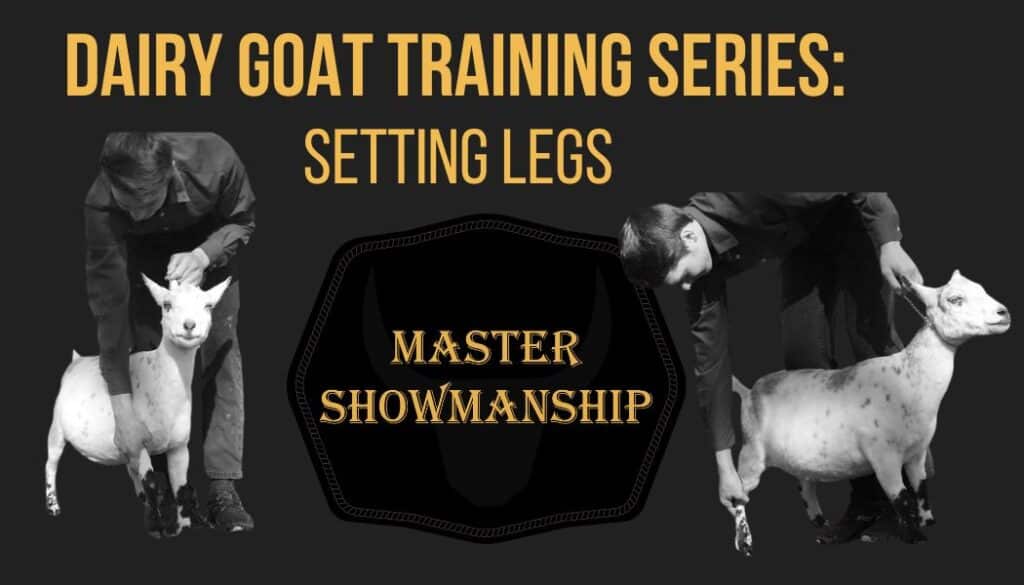
In this training series I am diving deeper into dairy goat training, taking the content directly from my book Show Your Way to the Top.
If your goat has passed the phase of training from my previous blog, where they are learning to stand and be tied or held on the collar. And if your goat is beginning to respect the collar, put yourself back into the picture.
Have her stand with your hand on the collar and get her comfortable with your presence. Touch and rub her all over to get her even more used to being handled. As your goat gets comfortable with you, increase the amount of rubbing especially down her legs and between her rear legs where her udder will be when she freshens. Practice rubbing down her back and dropping her topline. You want to get her comfortable with all show processes early on. Chapter seven of my book will cover dropping the topline or pinching her down, for now you just want her to be used to the handling.
Practice picking up the legs and setting them down. Don’t allow the goat to choose where her leg will be set. She needs to learn to depend on and trust in your decision. When you pick up a rear leg, grab it right at the hock to ensure maximum control and to prevent throwing the goat off balance. When you pick up the front legs, lift from as high on the leg as possible. When you do this correctly, the leg will stay straight and go down directly where you want it.
During this part of training, try to identify what your animal needs. Some goats panic when you touch their belly and others jump around or stomp when you pick up a certain leg. Just sit and rub its belly or leg until there is less of a reaction and then stop. When you stop touching her, you are rewarding the good behavior. Give the animal a moment’s break and then repeat the process. By doing this, you are letting the animal know that they get what they want when you get what you want. The point of this simple training is to get her to tolerate your touching and handling her. If you spend time with your goat, you will find that this part of the training process moves very quickly. Goats have plenty of things to stress them out at a show and if you haven’t gotten them used to being touched that only compounds their worry. If they are comfortable with touching, it can have the opposite effect since it is something familiar in the new world to calm them down.
When you feel like your goat is no longer fighting the collar and has calmed down, then you can move on to the next step which is walking. Walking is important because you will be walking your goat a lot on show day. It can be a quick training process, but takes longer the older your goat gets. The sooner you can get your goats to this stage of training the easier it will be on you.
The next stage is walking. Sometimes this is the most satisfying step in training. If you follow the systems in the next chapter, your goat could progress very quickly.
That is my second blog on dairy goat training. If you want the entire section from the book and tons of more tips, you may want to get yourself a copy. This comes directly from my book Show Your Way to the Top at mastershowmanship.com/shop or even grab it on amazon if you prefer!
Helpful tips directly in your inbox!
One Response
Hello, I was wondering if Nigerian dwarfs are the only breed of dairy goats that you show. And ask if you have done a series on diary goat grooming and if not then ask if you could. It would be very helpful, Thank you.